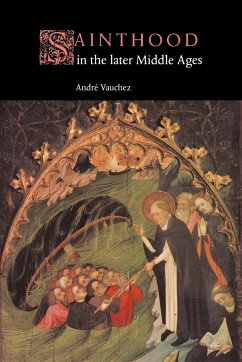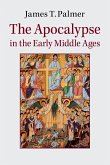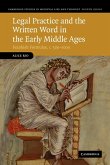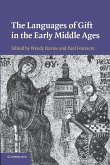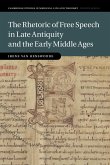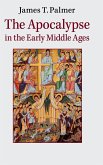A standard work of reference for the study of the religious history of western Christianity in the later Middle Ages.
This is a standard work of reference for the study of the religious history of western Christianity in the later middle ages which, since its original publication in French in 1981, has come to be regarded as one of the great contributions to medieval studies of recent times. Hagiographical texts and reports of the processes of canonisation - a mode of investigation into saints' lives and their miracles implemented by the popes from the end of the twelfth century - are here used for the first time as major source materials. The book illuminates the main features of the medieval religious mind, and highlights the popes' attempts to gain firmer control over the wide variety of expressions of faith towards the saints in order to promote a higher pattern of devotion and moral behaviour among Christians.
Table of content:
Introduction; Book 1. The church and the cult of the saints in the medieval west: Part 1. Control of the Cult of the Saints from its Origins to the Thirteenth Century: 1. Late antiquity and the early middle ages: 'vox populi' and episcopal power (third to tenth century); 2 .Towards papal reservation of the right of canonisation (eleventh to thirteenth centuries); 3. The process of canonisation from its origins to its classical form (c. 1200 to c. 1270); 4. The evolution of the role of canonisation: from control to selection; 5. 'Sancti' and 'beati'; Part 2: The Rise of the Cult of the Saints and the Assertion of 'Modern' Sanctity: 6. The role of the papacy; 7. The role of the regulars; 8. The secular clergy and the laity; Conclusion: the cult of the saints between universalist aims and the rise of particularism; Book 2. Typology of medieval sanctity: Part 1. Popular Sanctity and Local Sanctity: 9. Popular sanctity; 10. Local sanctity; Part 2. Official Sanctity: Forms and Criteria of Christian Perfection According to Processes of Canonisation: 11. Typology of official sanctity: quantitative aspects; 12. Forms of sanctity and ways of life; 13. The evolution of the criteria of sanctity from the late twelfth to the early fifteenth centuries; Conclusion: the Roman church faced with popular and local sanctity: a silent rejection; Book 3. The signs and significations of sanctity: Part 1. The Manifestations and Effects of Sanctity in the Popular Mind: 14. 'Virtus': the language of the body; 15. The structures and expansion of the field of the miraculous; Part 2. The Roman Church and Sanctity: 16. The Holy See and the critique of miracles; 17. Life and virtues of the saints in the processes of canonisation; Conclusion: the hagiographical mentality and the popular mind; General conclusion; Appendices; List of sources; Bibliography; Bibliographical update; Index of places; Index of persons; Subject index.
This is a standard work of reference for the study of the religious history of western Christianity in the later middle ages which, since its original publication in French in 1981, has come to be regarded as one of the great contributions to medieval studies of recent times. Hagiographical texts and reports of the processes of canonisation - a mode of investigation into saints' lives and their miracles implemented by the popes from the end of the twelfth century - are here used for the first time as major source materials. The book illuminates the main features of the medieval religious mind, and highlights the popes' attempts to gain firmer control over the wide variety of expressions of faith towards the saints in order to promote a higher pattern of devotion and moral behaviour among Christians.
Table of content:
Introduction; Book 1. The church and the cult of the saints in the medieval west: Part 1. Control of the Cult of the Saints from its Origins to the Thirteenth Century: 1. Late antiquity and the early middle ages: 'vox populi' and episcopal power (third to tenth century); 2 .Towards papal reservation of the right of canonisation (eleventh to thirteenth centuries); 3. The process of canonisation from its origins to its classical form (c. 1200 to c. 1270); 4. The evolution of the role of canonisation: from control to selection; 5. 'Sancti' and 'beati'; Part 2: The Rise of the Cult of the Saints and the Assertion of 'Modern' Sanctity: 6. The role of the papacy; 7. The role of the regulars; 8. The secular clergy and the laity; Conclusion: the cult of the saints between universalist aims and the rise of particularism; Book 2. Typology of medieval sanctity: Part 1. Popular Sanctity and Local Sanctity: 9. Popular sanctity; 10. Local sanctity; Part 2. Official Sanctity: Forms and Criteria of Christian Perfection According to Processes of Canonisation: 11. Typology of official sanctity: quantitative aspects; 12. Forms of sanctity and ways of life; 13. The evolution of the criteria of sanctity from the late twelfth to the early fifteenth centuries; Conclusion: the Roman church faced with popular and local sanctity: a silent rejection; Book 3. The signs and significations of sanctity: Part 1. The Manifestations and Effects of Sanctity in the Popular Mind: 14. 'Virtus': the language of the body; 15. The structures and expansion of the field of the miraculous; Part 2. The Roman Church and Sanctity: 16. The Holy See and the critique of miracles; 17. Life and virtues of the saints in the processes of canonisation; Conclusion: the hagiographical mentality and the popular mind; General conclusion; Appendices; List of sources; Bibliography; Bibliographical update; Index of places; Index of persons; Subject index.

